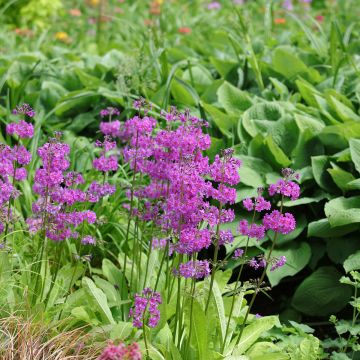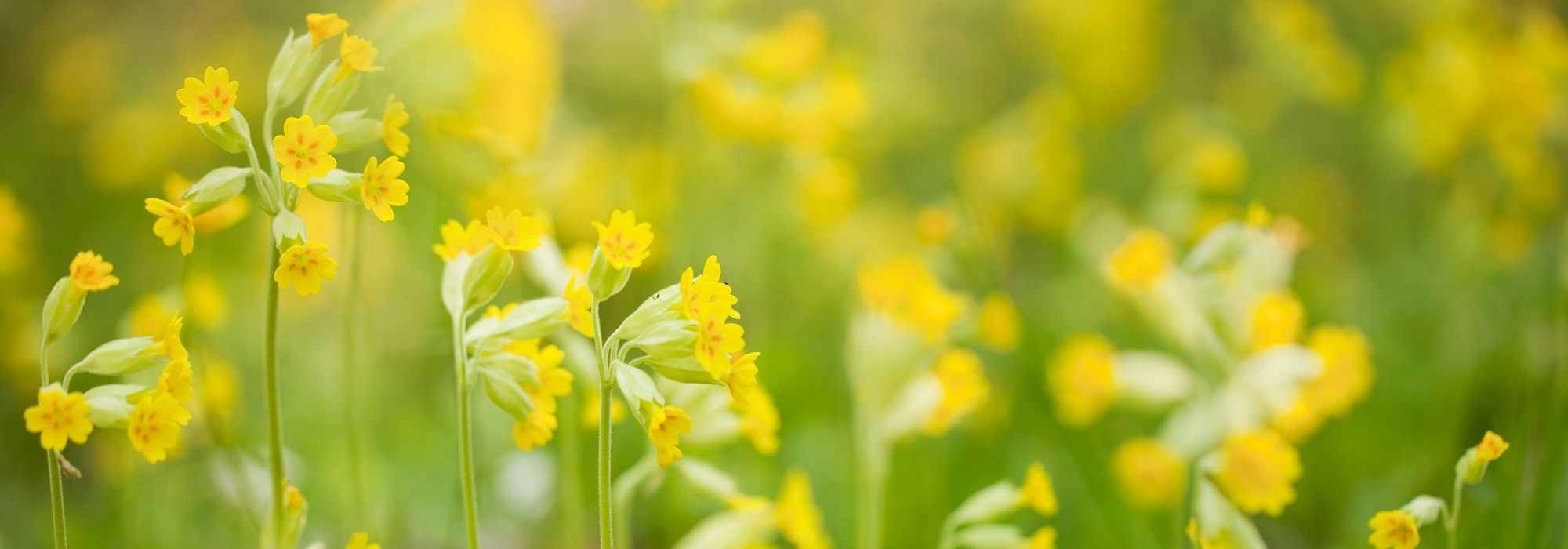

Primevère - Primula elatior Veristar Late Marmelade


Primevère - Primula elatior Veristar Late Marmelade
Primula eliator Veristar Late Marmelade - Oxlip
Primula x eliator Marmelade
Oxlip
Special offer!
Receive a €20 voucher for any order over €90 (excluding delivery costs, credit notes, and plastic-free options)!
1- Add your favorite plants to your cart.
2- Once you have reached €90, confirm your order (you can even choose the delivery date!).
3- As soon as your order is shipped, you will receive an email containing your voucher code, valid for 3 months (90 days).
Your voucher is unique and can only be used once, for any order with a minimum value of €20, excluding delivery costs.
Can be combined with other current offers, non-divisible and non-refundable.
Why not try an alternative variety in stock?
View all →This plant carries a 6 months recovery warranty
More information
We guarantee the quality of our plants for a full growing cycle, and will replace at our expense any plant that fails to recover under normal climatic and planting conditions.
Would this plant suit my garden?
Set up your Plantfit profile →
Description
The Primula eliator F1 'Veristar Late Marmelade' is a hardy primrose that will be appreciated for its performance in the garden and its spring flowering, which is both abundant and colourful. The plant produces flower stems that bear numerous small flowers in a deep orange colour, perfectly highlighted by dark green foliage. Beautiful in borders, it is also an ideal perennial to biennial plant for ornamental containers. It should be planted in a sunny but not scorching location, in soil enriched with compost, fertile and moist.
The Primula eliator, also known as the Oxlip or Woodland Primrose, is a herbaceous perennial plant that belongs to Europe's native flora and is most commonly found in the semi-shade of light woodlands or on the edge of forests. When abundant, this species, sometimes called the cuckoo flower, is an indicator of ancient forests, relatively undisturbed by human activity.
This plant has produced numerous short-lived perennial hybrids through crossbreeding with the common primrose (Primula vulgaris), often grown as biennial plants. This 'Veristar Late Marmelade' primrose blooms in March-April, depending on the climate, for approximately 4 weeks. On each plant, several flower stems reach a height of 25 cm (10in) and bear several single flowers, slightly fragrant, composed of rounded petals that darken from a deep orange to a pale shade over time, with a discreet yellow centre. Their warm colour is well complemented by evergreen rosettes of large, heavily crinkled dark green leaves, which are ornamental even when not in bloom.
Eliator primroses are less well-known than stemless primroses, but they have their own advantages: they are taller, hardier, more perennial, and their flowering is also more spectacular. They are excellent companions for shade-loving perennials and plants that thrive in cool, light woodlands, such as heucheras, Brunnera, forget-me-nots, horned violets, and hostas. They can also be used to decorate terraces, windows, or balconies, when planted in containers that will brighten up spring scenes. They also look great in a simple bouquet, mixed with forget-me-nots or early tulips.
Flowering
Foliage
Plant habit
Botanical data
Primula
x eliator
Marmelade
Primulaceae
Oxlip
Cultivar or hybrid
Other Primula - Primroses
View all →Planting and care
Primroses can be planted in pots and containers or directly in the ground in finely prepared and enriched soil. Plant them as soon as possible upon receipt, in September-October or in March-April. If the intended location is not yet ready or the conditions are unfavourable for planting, you can grow them on as plug plants for 4 to 6 weeks.
In pots and containers, use a good potting soil for flowering plants (geranium-type potting soil) enriched with clay and slow-release fertiliser, light and well-draining. The top of the plug should be level with the soil. Water generously at planting and during the following weeks, as plug plants can dry out quickly. However, be careful of excess water! Make sure to use containers with drainage holes and empty the saucer 10 minutes after watering. Remember to water even during winter if it doesn't rain or if the container is placed in a sheltered location. Do not water during freezing periods.
Very floriferous and fast-growing, primroses are hungry plants. As soon as growth resumes, in late February or early March, and throughout the flowering period, apply a liquid fertiliser for flowering plants containing iron and trace elements 1 to 2 times a week in the watering can. Remove faded flowers to promote new blooms. Once the flowering is over, potted plants can be replanted in the garden in semi-shade.
Planting period
Intended location
Care
Planting & care advice
This item has not been reviewed yet - be the first to leave a review about it.
Similar products
Haven't found what you were looking for?
Hardiness is the lowest winter temperature a plant can endure without suffering serious damage or even dying. However, hardiness is affected by location (a sheltered area, such as a patio), protection (winter cover) and soil type (hardiness is improved by well-drained soil).

Photo Sharing Terms & Conditions
In order to encourage gardeners to interact and share their experiences, Promesse de fleurs offers various media enabling content to be uploaded onto its Site - in particular via the ‘Photo sharing’ module.
The User agrees to refrain from:
- Posting any content that is illegal, prejudicial, insulting, racist, inciteful to hatred, revisionist, contrary to public decency, that infringes on privacy or on the privacy rights of third parties, in particular the publicity rights of persons and goods, intellectual property rights, or the right to privacy.
- Submitting content on behalf of a third party;
- Impersonate the identity of a third party and/or publish any personal information about a third party;
In general, the User undertakes to refrain from any unethical behaviour.
All Content (in particular text, comments, files, images, photos, videos, creative works, etc.), which may be subject to property or intellectual property rights, image or other private rights, shall remain the property of the User, subject to the limited rights granted by the terms of the licence granted by Promesse de fleurs as stated below. Users are at liberty to publish or not to publish such Content on the Site, notably via the ‘Photo Sharing’ facility, and accept that this Content shall be made public and freely accessible, notably on the Internet.
Users further acknowledge, undertake to have ,and guarantee that they hold all necessary rights and permissions to publish such material on the Site, in particular with regard to the legislation in force pertaining to any privacy, property, intellectual property, image, or contractual rights, or rights of any other nature. By publishing such Content on the Site, Users acknowledge accepting full liability as publishers of the Content within the meaning of the law, and grant Promesse de fleurs, free of charge, an inclusive, worldwide licence for the said Content for the entire duration of its publication, including all reproduction, representation, up/downloading, displaying, performing, transmission, and storage rights.
Users also grant permission for their name to be linked to the Content and accept that this link may not always be made available.
By engaging in posting material, Users consent to their Content becoming automatically accessible on the Internet, in particular on other sites and/or blogs and/or web pages of the Promesse de fleurs site, including in particular social pages and the Promesse de fleurs catalogue.
Users may secure the removal of entrusted content free of charge by issuing a simple request via our contact form.
The flowering period indicated on our website applies to countries and regions located in USDA zone 8 (France, the United Kingdom, Ireland, the Netherlands, etc.)
It will vary according to where you live:
- In zones 9 to 10 (Italy, Spain, Greece, etc.), flowering will occur about 2 to 4 weeks earlier.
- In zones 6 to 7 (Germany, Poland, Slovenia, and lower mountainous regions), flowering will be delayed by 2 to 3 weeks.
- In zone 5 (Central Europe, Scandinavia), blooming will be delayed by 3 to 5 weeks.
In temperate climates, pruning of spring-flowering shrubs (forsythia, spireas, etc.) should be done just after flowering.
Pruning of summer-flowering shrubs (Indian Lilac, Perovskia, etc.) can be done in winter or spring.
In cold regions as well as with frost-sensitive plants, avoid pruning too early when severe frosts may still occur.
The planting period indicated on our website applies to countries and regions located in USDA zone 8 (France, United Kingdom, Ireland, Netherlands).
It will vary according to where you live:
- In Mediterranean zones (Marseille, Madrid, Milan, etc.), autumn and winter are the best planting periods.
- In continental zones (Strasbourg, Munich, Vienna, etc.), delay planting by 2 to 3 weeks in spring and bring it forward by 2 to 4 weeks in autumn.
- In mountainous regions (the Alps, Pyrenees, Carpathians, etc.), it is best to plant in late spring (May-June) or late summer (August-September).
The harvesting period indicated on our website applies to countries and regions in USDA zone 8 (France, England, Ireland, the Netherlands).
In colder areas (Scandinavia, Poland, Austria...) fruit and vegetable harvests are likely to be delayed by 3-4 weeks.
In warmer areas (Italy, Spain, Greece, etc.), harvesting will probably take place earlier, depending on weather conditions.
The sowing periods indicated on our website apply to countries and regions within USDA Zone 8 (France, UK, Ireland, Netherlands).
In colder areas (Scandinavia, Poland, Austria...), delay any outdoor sowing by 3-4 weeks, or sow under glass.
In warmer climes (Italy, Spain, Greece, etc.), bring outdoor sowing forward by a few weeks.
































































